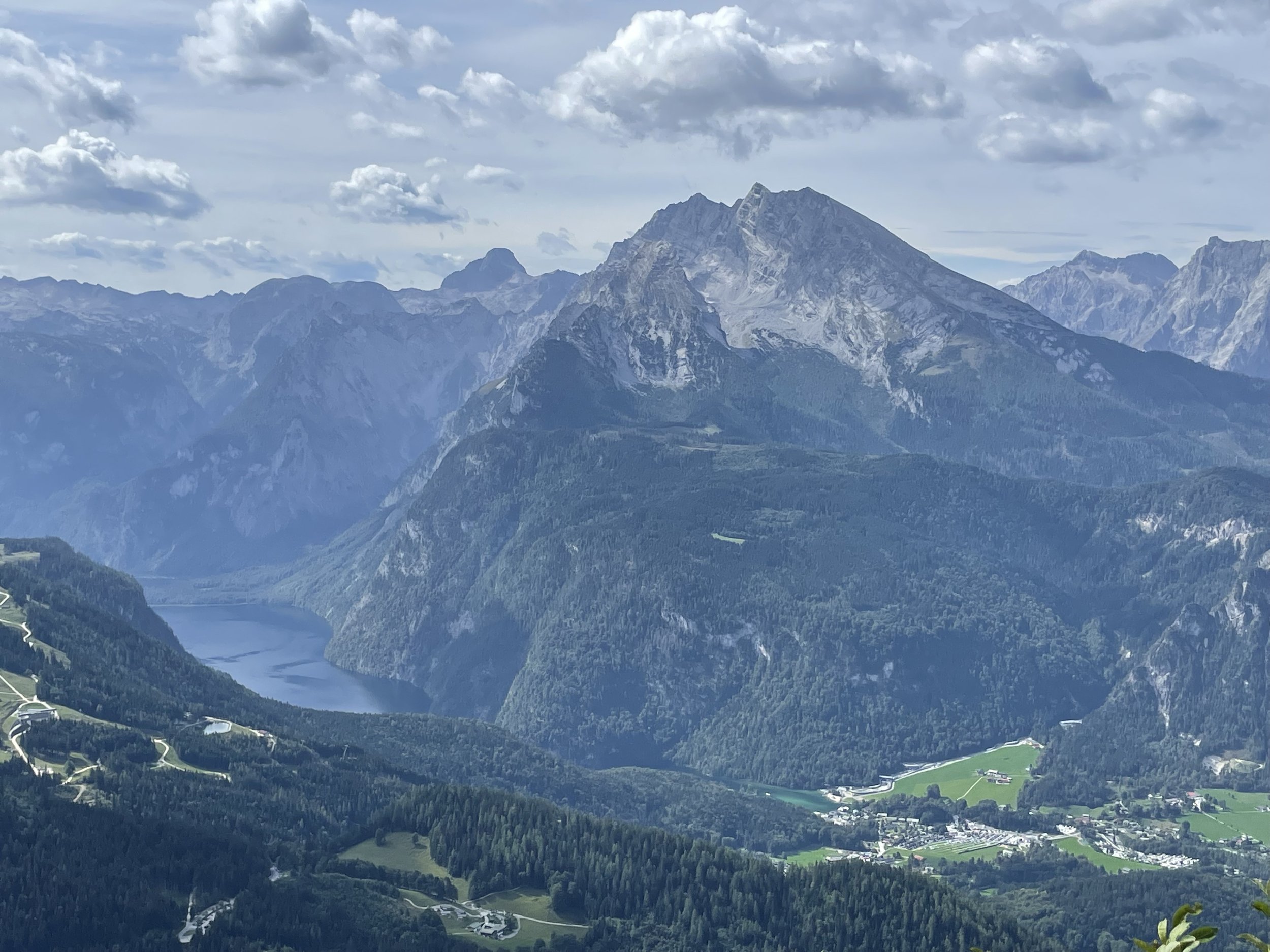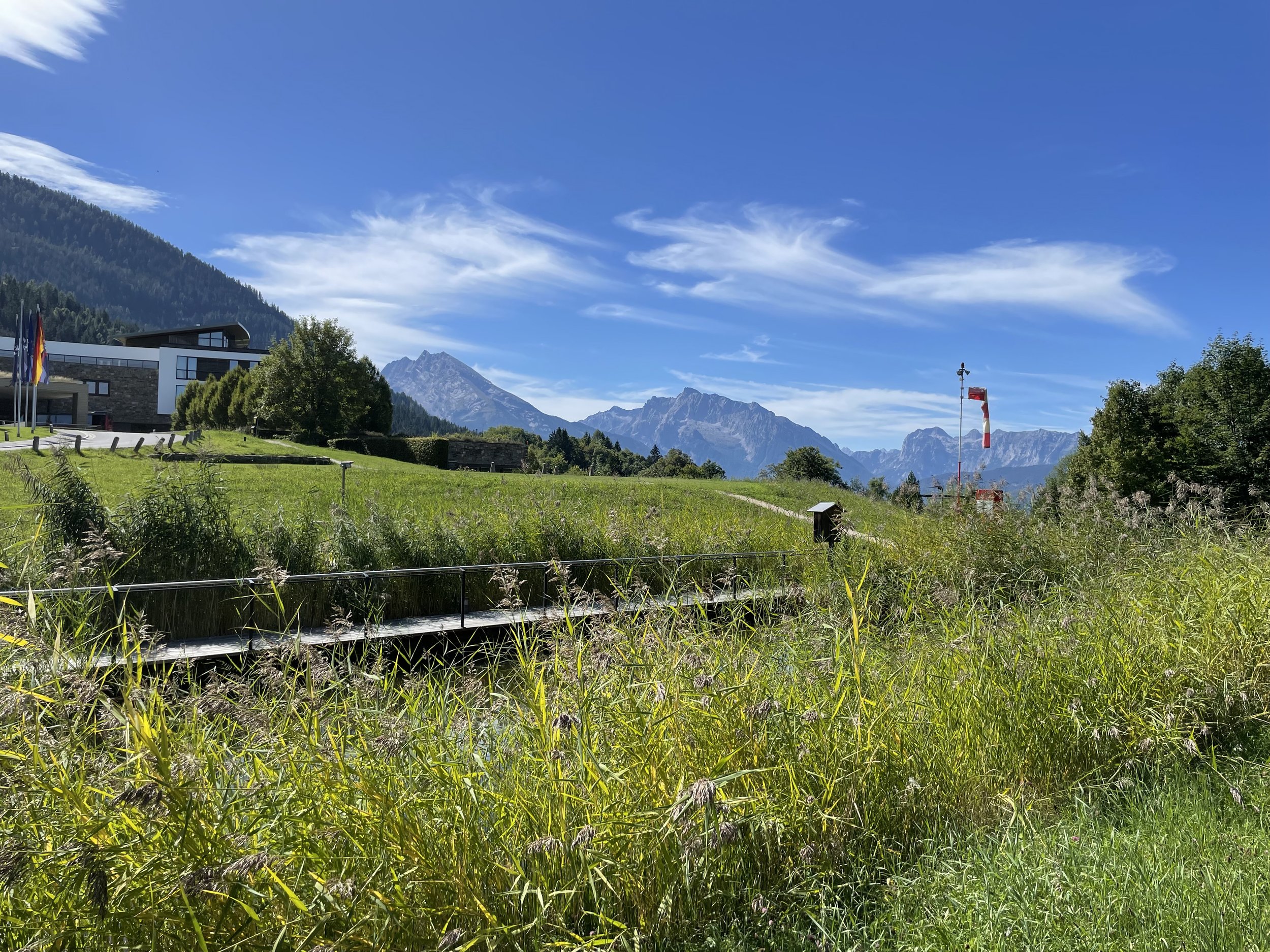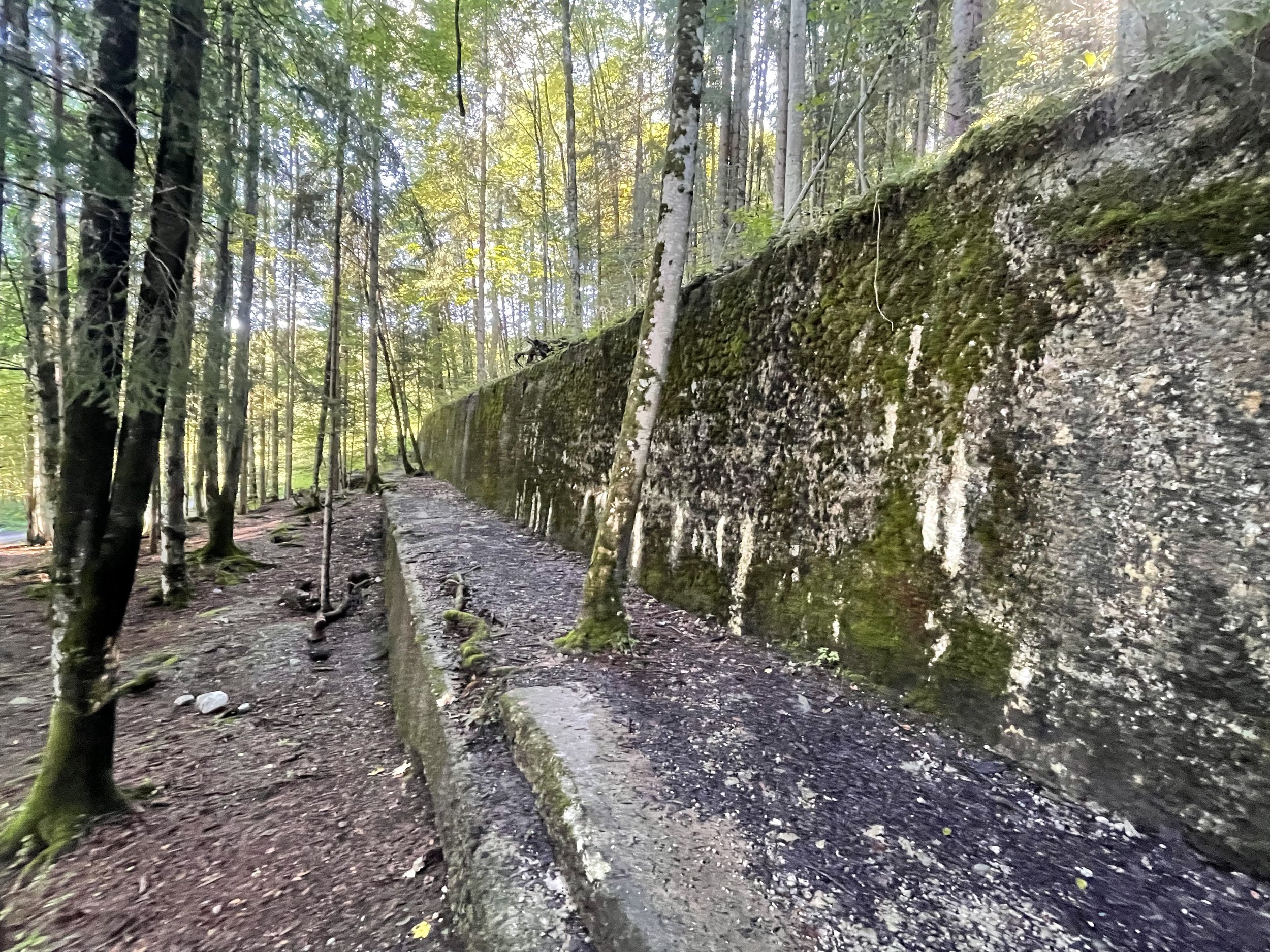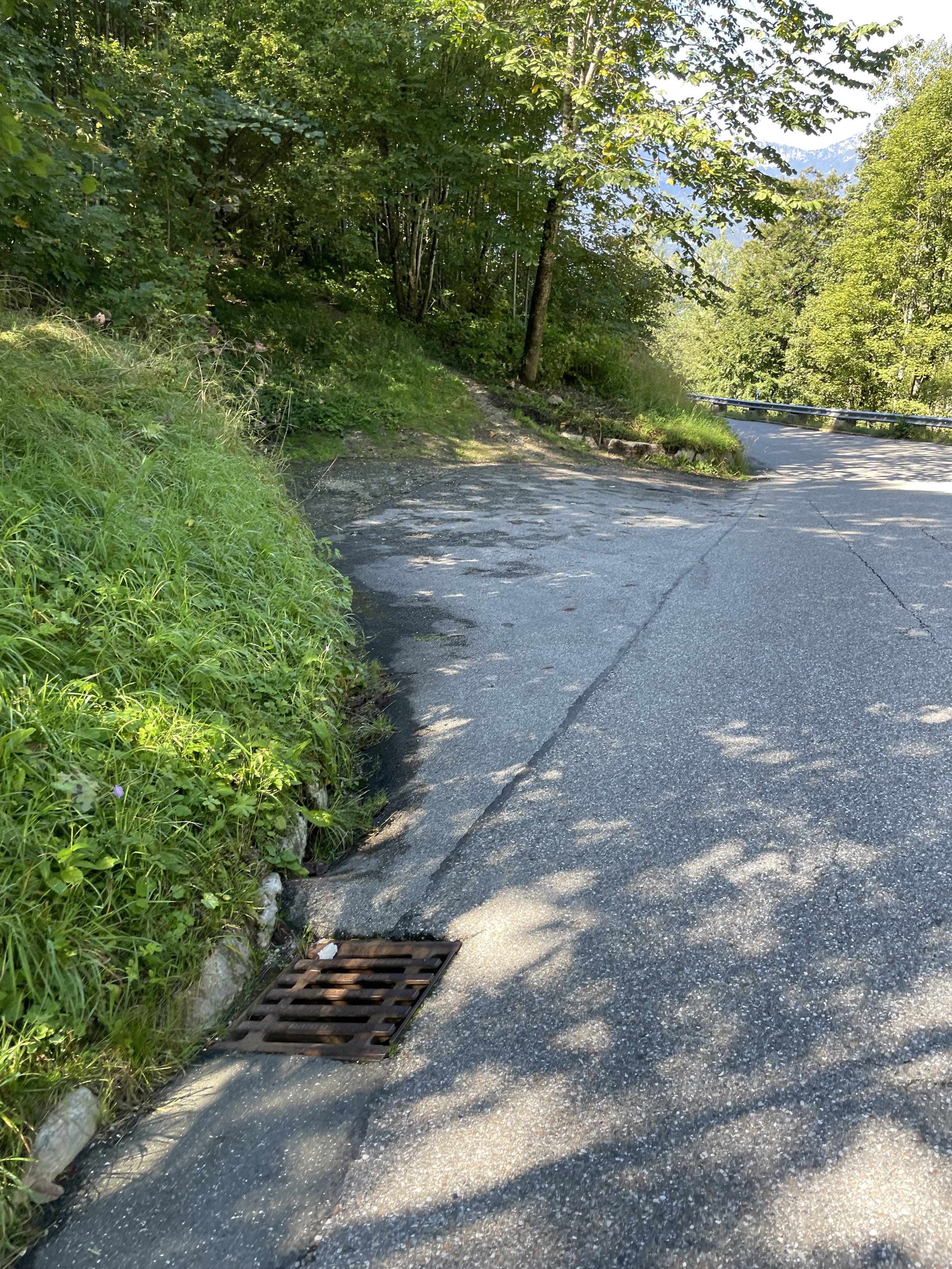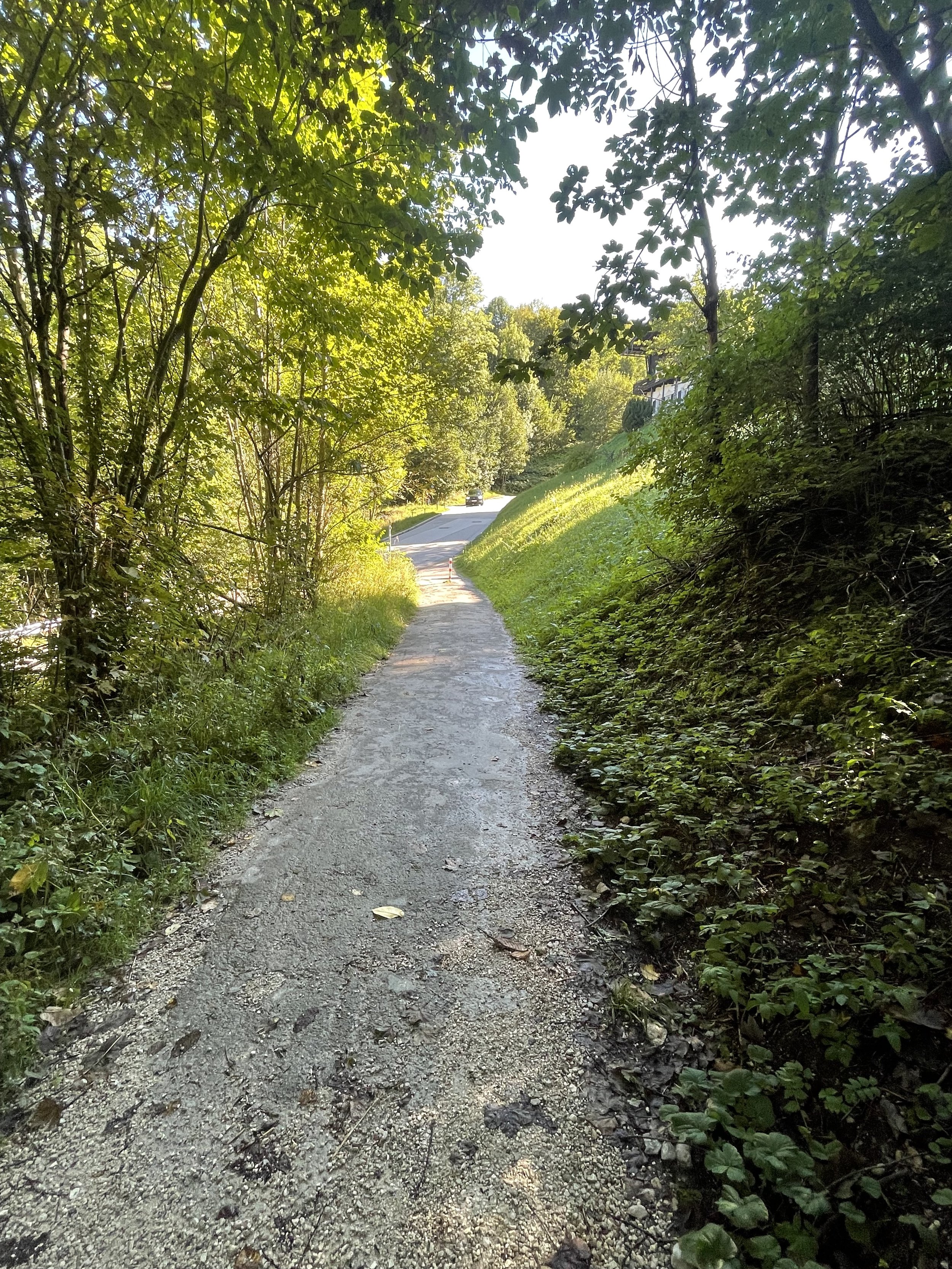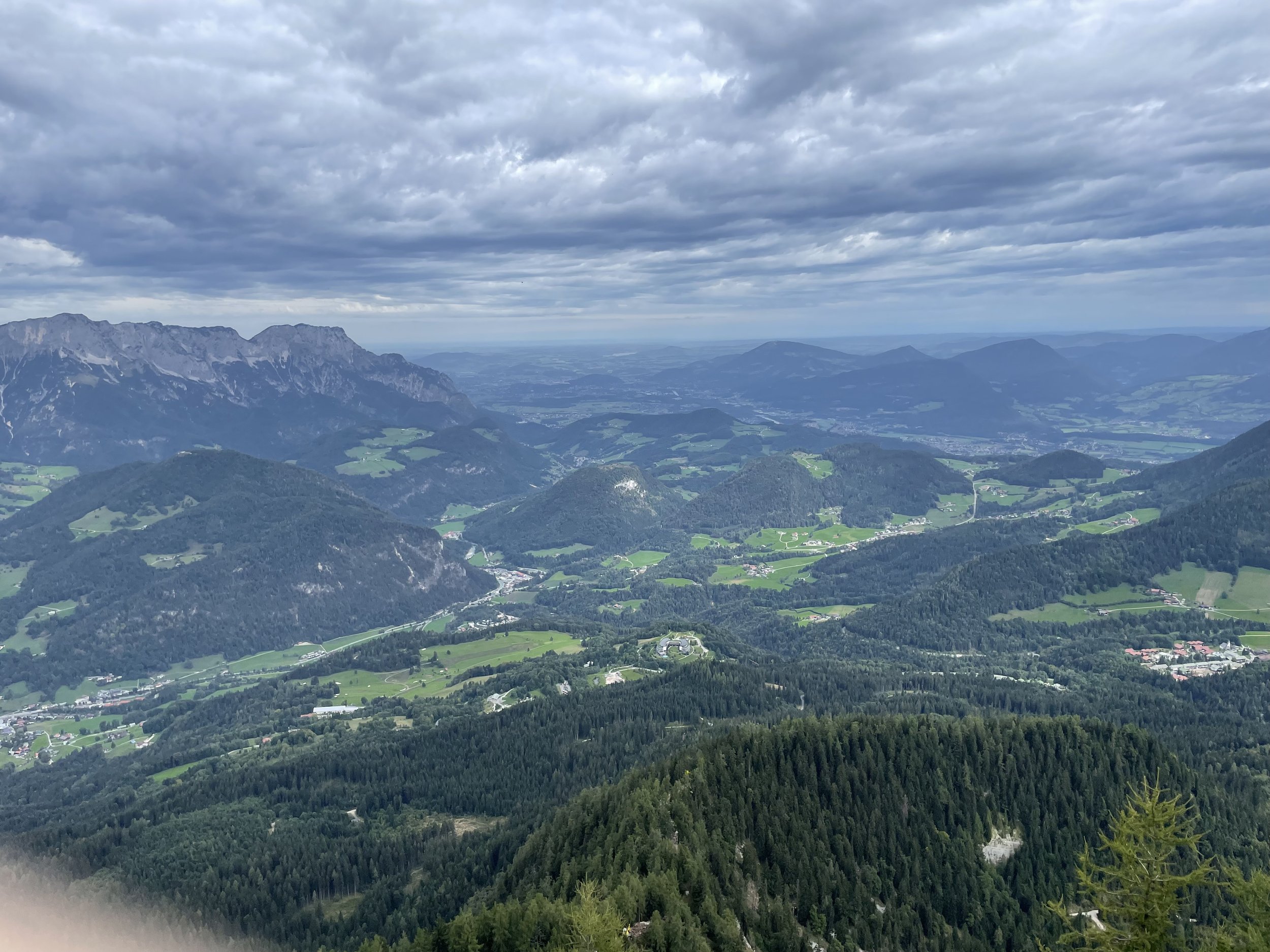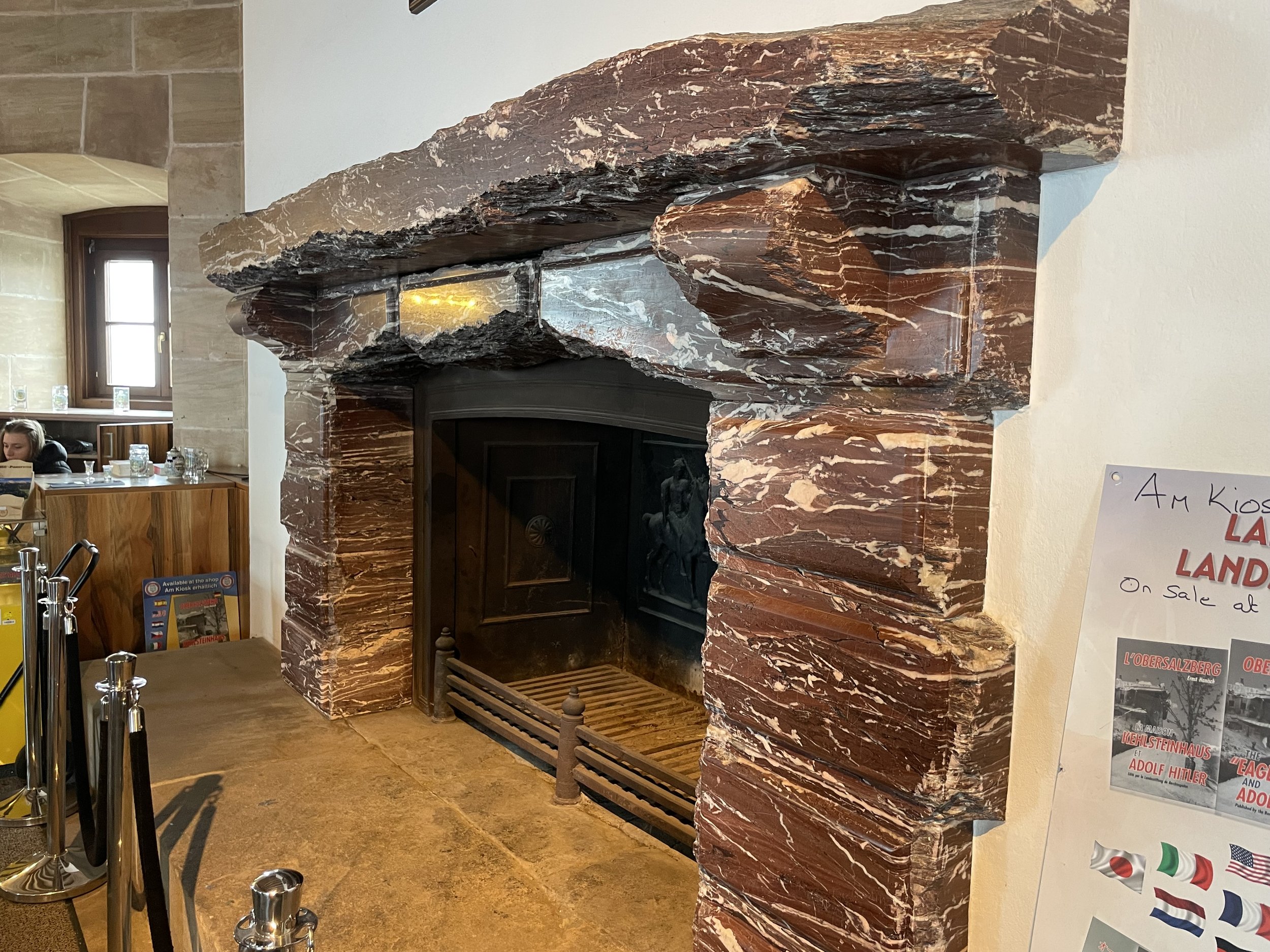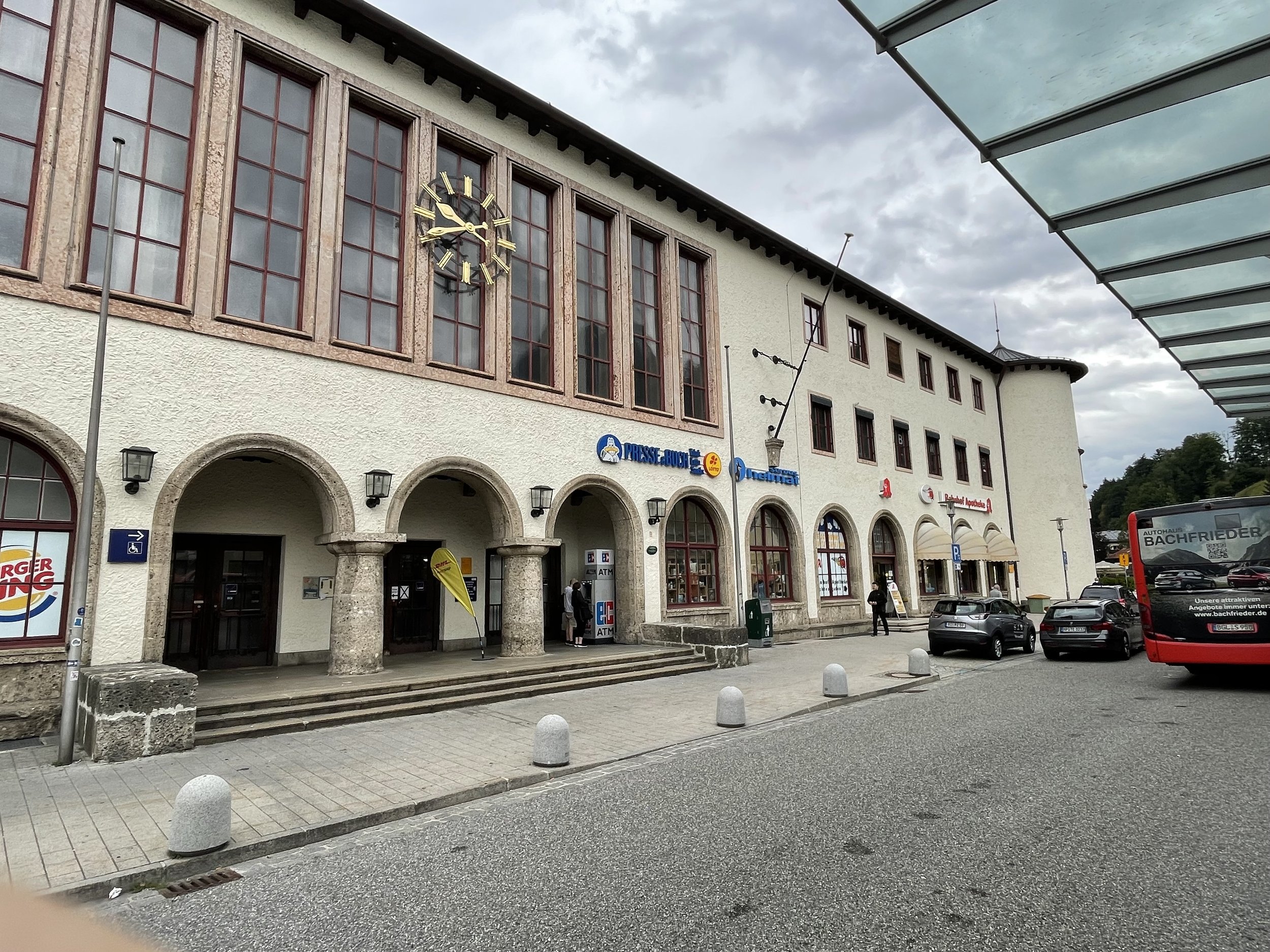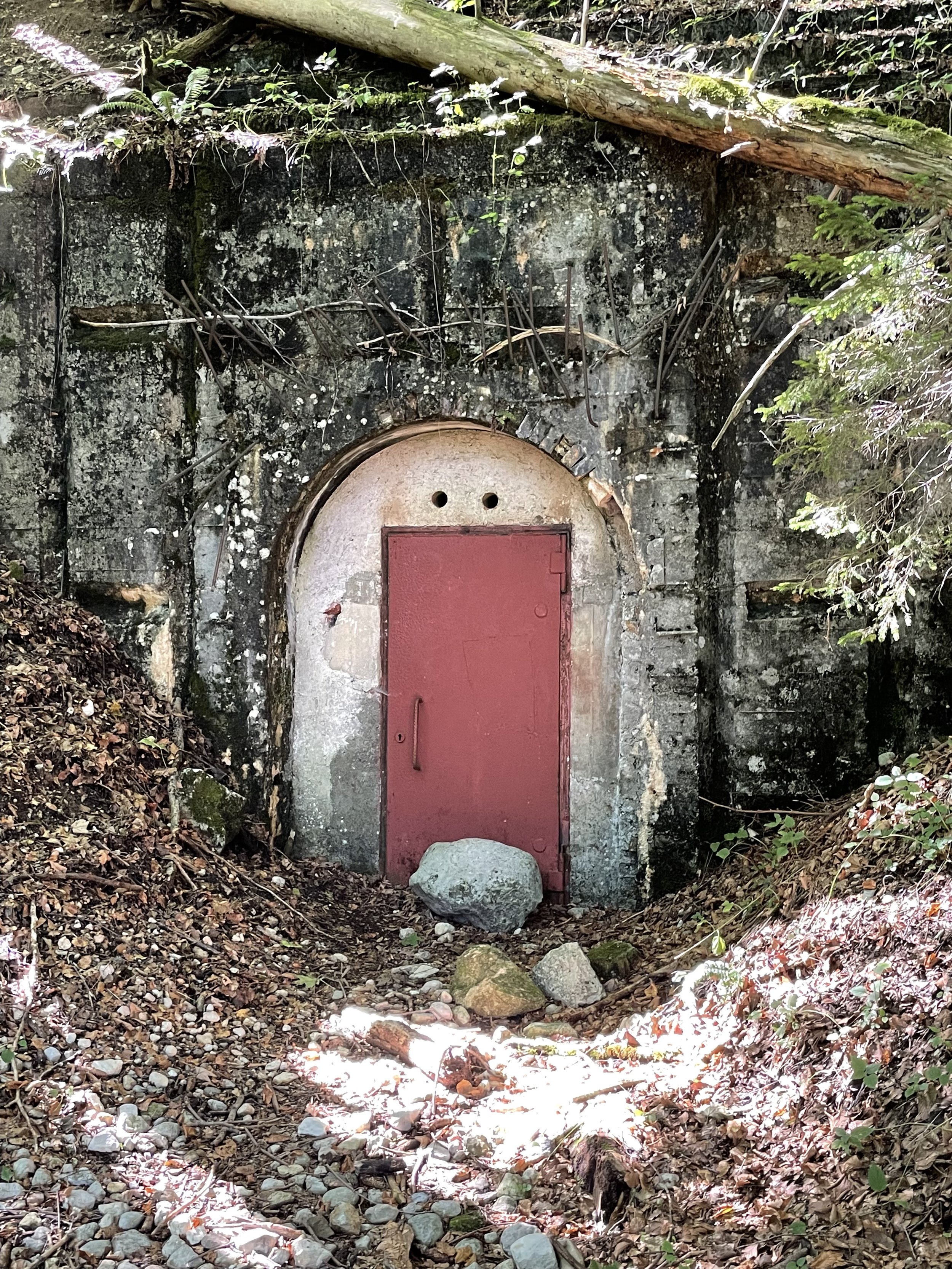Berchtesgaden, Sept 10 2022
Europe has no shortage of spas and even spa towns. They can be in mountain settings or built over natural hot springs. Something for everyone, so whether you’re looking for luxury accommodations, ease of access; something quaint perhaps, there are plenty of choices.
We were drawn to something with a historical setting and natural surroundings, so we wanted to give Berchtesgaden a try. This town is located in a small southern area of Germany that extends into the Bavarian Alps and is surrounded by Austria on three sides. It lies just 15 miles south of Salzburg, and I’m sure Maria Von Trapp’s favorite hill is well within sight.
The Berchtesgadener Ache river fronts the town
It has long been a favorite alpine location for tourists given its setting, accessibility by train and the beautiful lake Konigssee nearby. The most famous tourist to fall in love with it was Hitler, who settled there in the 1920’s, making it his home and later political center during his wild ride over Germany. This is where he met foreign dignitaries, conducted conferences and crafted most of his diabolical strategies.
The Kempinski resort sits high above the town about two miles east
The main resort here is the Kempinski Spa Hotel. The hotel is located in Obersalzberg just northeast of town and only 10 minutes from the main station. This zone was densely bombed by the British and American forces at the end of the war in an effort to destroy the Nazi nucleus, but much of the old town of Berchtesgaden and the old Bavarian architecture was spared. In fact the Kempinski is only a short walk to the WWII Documentation Center museum and the site of the famous Berghof.
The Kempinski is sort of a right size spa, big enough to be spacious with an indoor and outdoor pool open year round but not sprawling. There is a choice of saunas and a well appointed relaxing area with spa treatments. It is designed to embrace the surrounding natural area and offers beautiful views in every direction. Best of all, hiking, biking and organized excursions are a focus and there is a concierge just for that purpose. There are four restaurants, including the Michelin star “Pur” located on site. Everything about the hotel is very satisfying, from the service staff, to the food, to the amenities. Here you can easily spend a tranquil couple of days mixing in spa time, outdoor exercise and great food. In addition, it’s surprising inexpensive in comparison to equivalent resorts we’ve seen.
The Zum Türken hotel across the street from the resort was once the local SS headquarters
Facing the resort from the spot where Goring’s house once stood
I took the opportunity to hike the woods and hillside paths spreading out from the hotel in search of historical locations. There are many, but there is little left of them that one would otherwise notice. When Hitler made his base here before he took power, most of his entourage followed suit, building homes nearby and creating a security zone much like you would find for Truman’s compound in Key West, or for Camp David. Both Goering and Borman’s homes were located on the grounds of our hotel, and Hitler’s Berghof just a short walk down the road. There was a large greenhouse built to satisfy Hitler’s vegetarian diet (the ruins are found at the entrance drive to the hotel), and nearby also the small Zum Turken hotel which during that time served as an SS central office. Underneath all this are tunnels built late in the war to serve as bomb shelters, and bunkers fortified against the inevitable onslaught. Much of those tunnels remain and parts can be toured from the Documentation Center.
The retaining wall of the Bergof is all that remains
The limousines of Chamberlain and Mussolini once drove up the entrance to the Berghof
The long scenic path that winds down from the Berghof to the Tea House
I walked through the unmarked ruins of the Berghof, and saw the retaining wall and bits of driveway that remain. I then hiked down to the location of the old tea house Hitler visited daily whenever he was there. It is now faintly identified by a few fragments of concrete footings, but right next to the site is the beautiful overlook to the valley that was part of the teahouse setting and seems untouched. It was interesting to see old photos of the spot with the same views as now.
The view from the famous Berghof picture window…..Then
and Now. From the same spot
The overlook at the Tea House…..Then
and Now
The one location preserved in tact from those dark times is the Kehlsteinhaus or Eagles Nest which sits high on a mountain overlooking the entire area. It takes a 15 minute bus ride and a trip up in an elevator to get there. It was built for Hitler as a birthday gift, as a new and improved tea house. Yet he rarely used it, preferring his old humble refuge. His disciples missed the fact that having tea was more about the 30 minute hike than the luxury view. After the war, the mayor of Berchtesgaden pleaded with the US army to keep the untouched building in place. The US administrators along with the new German government were on a mission, erasing any trace of the former tenants. The locals maintained it should not be included in the purge, after all Hitler was hardly ever there. The powers that be agreed and it’s now the biggest tourist draw in the area. Money always has a way of creating its own logic. The building, nearly as it was, offers a one of a kind view and an eerie step into the past.
The entry to the tunnel and elevator for the Kehlsteinhaus or Eagle’s Nest
Inside the large tea room at the Eagles Nest
View from the Eagles Nest toward town
The red marble for the fireplace in the tea room was donated by Mussolini. The chips made by Allied soldiers grabbing souvenirs
The word Fascism seems to have gained use recently in the press and many editorials. Comparisons made with the MAGA movement and with Putin’s rule being examples. I often think using a simple label for an entire political system, be it Monarchy, Fascism, Communism even Democracy by our adversaries is clumsy, and to simply brand one as good or evil without some understanding is ignorant. Like most political philosophies it has its strengths and weakness. Besides there is nothing wrong with a dictator if you can ever just find the right person for the job (that’s meant as a joke).
The Hofbrauhaus Braustubl. Great beer garden, great food and yes beer.
That said, I think there is something unique about any version yet invented for Fascism, and that being it is the most tribal of all the political ideas. Its central focus on nationalism, on exclusion, on protecting who “we” are and demonizing all those who “we” aren’t. Traits that always have and I think always will, cause it to fly off it it’s tracks and into a ball of fire. I think we’re right to fear it and right to snuff it out early.
The smallest town in Germany with a Hauptbanhof (rail terminal). Built just before the war.
The entrance to Goring’s family bomb shelter and tunnel system. Hidden in the woods and welded shut.
When you see the ruins of the Third Reich in Obersalzberg, you can’t keep from being impressed by the efforts made to remove them. They were bombed by fleets of bombers in 1945, set fire to, blown up in 1952 and again in the 1960’s and 1990’s. The rubble carted off so nothing remained. Unless you really know what you’re looking for, you would simply walk past these places without the slightest notice. It’s as if it’s out of some horror novel, we kill the monster, drive a stake in it’s heart, cut off it’s head, and try to ensure it can’t come back to life.
Seems to me what we should fear most is not the dead monster, but the swamp it came out of.
